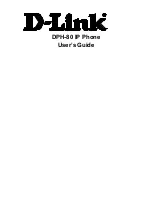
StarLink
™
SLE-LTE Commercial Series Alarm Communicators -- Installation Instructions
7
the previous page.
Note:
These event codes and zone numbers can be
changed from the Management Center screen (located at
www.napconoc.com).
Upon alarm, the NOC can optionally send an SMS mes-
sage to a third party that includes the appropriate Contact
ID alarm code, including the zone or user number, if appli-
cable. The "
STARLINK RADIO RELATED EVENT RE-
PORT CODES
" table also includes the most common Con-
tact ID alarm codes.
Programming StarLink Radio Troubles
It is required that if a StarLink radio or control panel trou-
ble is detected, that it is reported to the central station.
When the StarLink radio detects and sends a trouble to
the control panel, the control panel must be programmed
to annunciate this trouble. The radio can detect multiple
troubles as indicated by the "Red Trouble LED" ("
D5
").
For these troubles to be annunciated at the panel, there
are several methods, some of them are configurable at the
Management Center screen (www.napconoc.com):
Wire the radio PGM1 output to a dedicated control panel
zone (input) to annunciate the trouble (activate a trouble
sounder) when an open is detected. The radio must
also report this trouble to the central station. With Nap-
co control panels, program a dedicated zone for Day
Zone, Mini-sounder on Alarm and No bell on Alarm.
Wire the zone as indicated in the wiring diagrams further
in this manual.
For
models
with
the
SLE-ULPS-R
Power Supply, wire
this Power Supply trouble output relay to the two termi-
nals of the control panel zone dedicated to the trouble.
With the GEMC Commercial Fire control panels, use the
dry contacts of the Power Supply relay by removing the
jumper and using the contacts of the Power Supply relay
(Common and N/O) in series with a 2.2k EOLR.
For radio models
without
the
SLE-ULPS-R
Power Sup-
ply (powered by the control panel Aux Power terminals),
wire the radio directly to the PGM1 output of the control
panel (program the radio to report all troubles on
PGM1). Alternatively, you can use the GEMC-F8ZCPIM
module to detect a trouble on the zone by use of a PGM
output of the radio. See special wiring instructions for
use of the GEMC-F8ZCPIM zones.
You can also wire to the positive terminal of the dedicat-
ed zone on a GEMC-EZM8. Thus when a radio trouble
is detected, the radio PGM activates the control panel
zone, and the panel generates a trouble that is sent to
the central station.
All installations also require wiring an output from the
control panel, as follows: With Gemini C-Series
(GEMC) control panels, we recommend using the Fire
Aux Relay. Program the Fire Aux Relay to activate as a
trouble relay. Wire this relay to the StarLink module
IN2
terminal.
Note:
We recommend using the text " LTE Trouble"
as the Zone Description.
StarLink Radio Supervision
If the two Telco wires (DACT interconnect wiring to the
radio) between the StarLink radio and the control panel
are cut or otherwise disconnected, the control panel must
detect and generate a local trouble indication. The control
10-1/8"
11-1/2"
9-1/2"
9-21/64"
Red and White Metal Housing Dimensions (inches)
panel must trigger an output to activate the StarLink radio
to report this line cut fault to the central station. Program
the control panel for telephone supervision. Program the
StarLink radio using the Management Center "Advanced
Features" screen (at www.napconoc.com) to enable the
Line Cut feature on all troubles (therefore a dedicated zone
is not required).
Note:
Some control panels may require a
different duration than the default time of 3 minutes.
Supervision Time Schedule Considerations
If a status change (alarm trouble, etc.) is transmitted, the
radio supervision timer is restarted.
For example, if a status change is sent, the next regular
supervision transmission will occur at the interval deter-
mined by your rate plan.
Configuration Download / Firmware Updates
Technician on site required.
For Commercial Installations a technician is required to be
on site during any reprogramming of the radio or control
panel and must perform / re-perform acceptance testing.
To perform a download or update the radio firmware,
jumper 1 must be removed. UL requires that the jumper
be replaced after the download is complete.
Failure to
replace the jumper would allow downloads to the radio
without a technician on-site
.
For Residential installations jumper 1 may be removed to
permit uploading and downloading without a technician on
site, however, the dealer is responsible for ensuring the
system is operating correctly after any downloads or
changes to the system.
Cover Tamper
The SLE-LTE series radios in the metal housings may op-
tionally have front and rear tamper switches installed
(GEM-Tamperkit) and wired to the control panel (see page
18).
Note:
The tamper switch on the radio PC board is
not used in this housing (but continues to function if
pressed).






































